
Hey y’all! Thanks so much for stopping by. My name is Laura and I am an Elementary School Counselor turned Curriculum Writer. At my precious school in Nashville, TN, 97% of my students were living in …
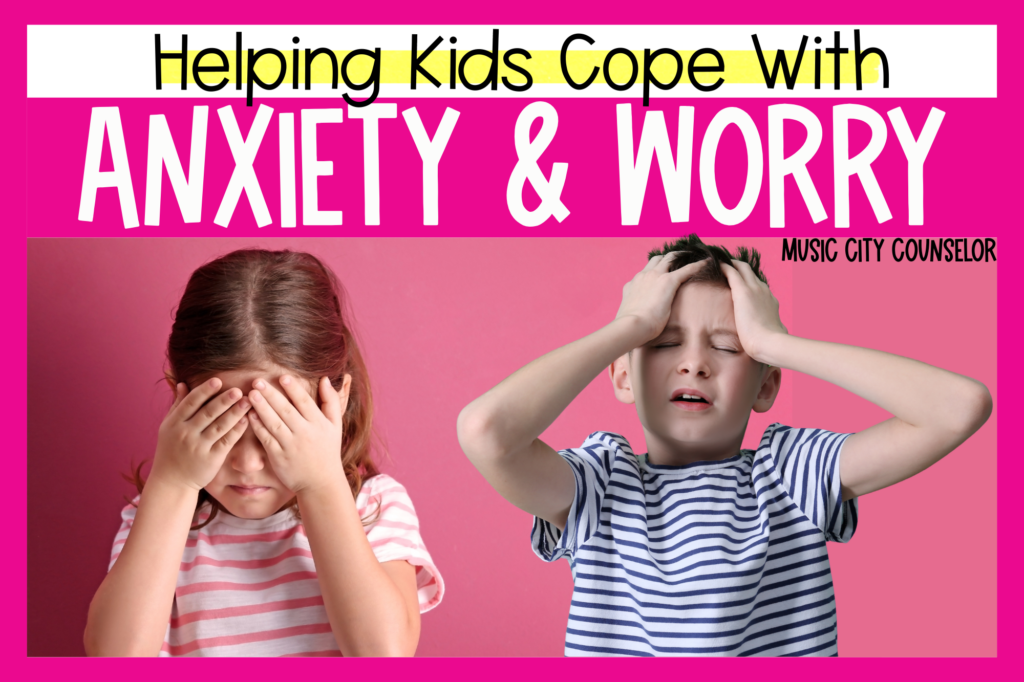
Did you know that approximately 9.2% of children have anxiety? This is a 27% increase from years before 2016 (Lebrun-Harris, 2022).
What does this mean for you as a school counselor or classroom teacher? In a school of 500 students, there will be around 50 students experiencing anxiety. This is NOT a number that educators can overlook. Helping kids cope with anxiety must be a top priority!
Children experience worries, fears, and nervousness just like adults. These thoughts and feelings can be about common things like speaking in front of others or specific fears like spiders. Some fears are school related like test-taking.
Anxiety becomes a problem for elementary-aged children when it begins to inhibit pieces or all of their daily life. It’s important to take a comprehensive look at a child’s life and discuss various signs of anxiety in different settings with classroom teachers and caregivers when concerns are present.
Anxiety can be shown through inward or outward physical and behavioral signs. When experiencing this level of anxiety, it can negatively impact a child’s ability to take part and thrive in school. Here are common signs of anxiety in children:
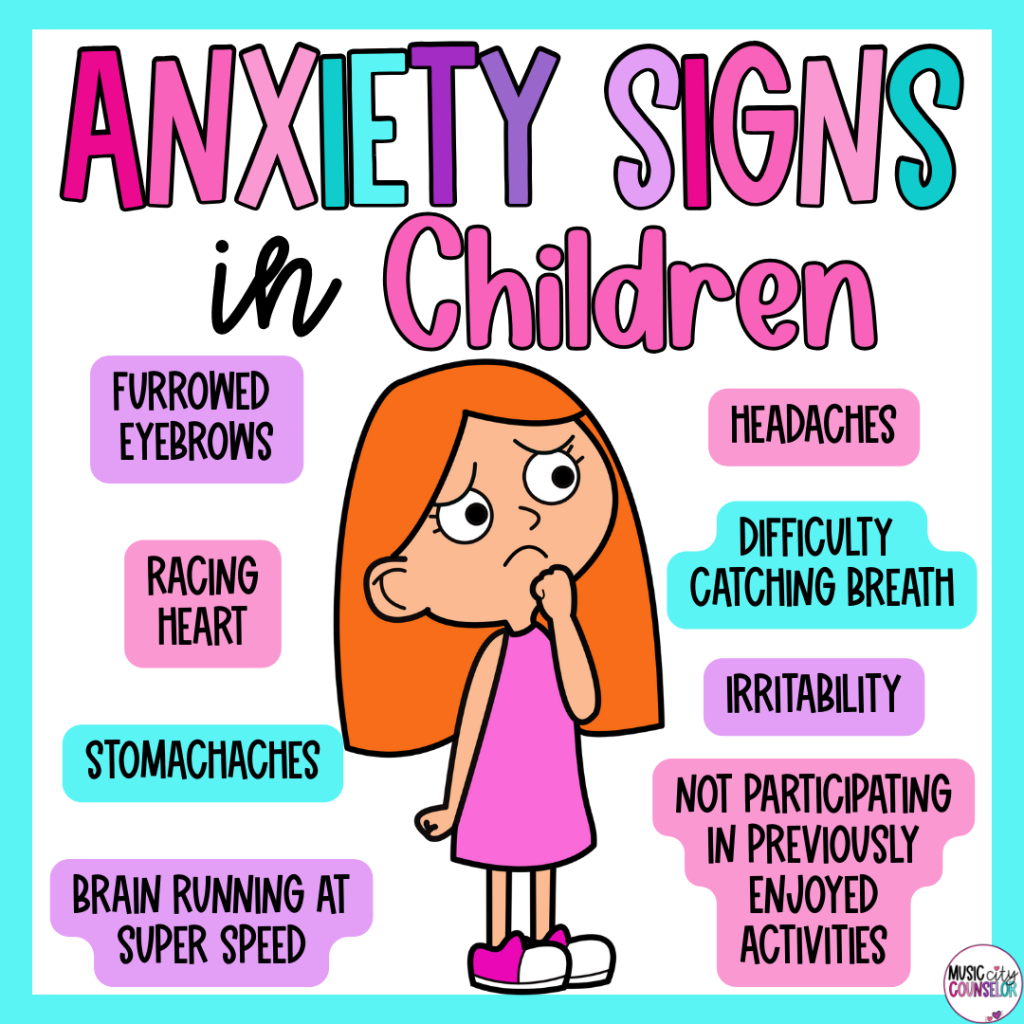
*It is important to note that most children exhibit some of these signs from time to time, but children with anxiety show these signs repetitively or in a pattern.
For most children, their anxiety isn’t present all of the time. It can be triggered by certain situations that happened in the past, are occurring presently, or may be upcoming.
Here are common anxiety triggers in children:

Helping kids identify their anxiety triggers gives them a sense of the “when” and the “why” behind their feelings. When they understand their triggers, children feel more in control of their anxious thoughts and capable of managing them. They can face their feelings head on and know when it’s time to start using coping skills.
To help students identify their anxiety triggers, I love using this interactive activity. It let’s students explore 24 scenarios and determine whether the situation would make them feel calm, nervous, or panicked. From there, they can identify the 6 triggers that panic them the most.
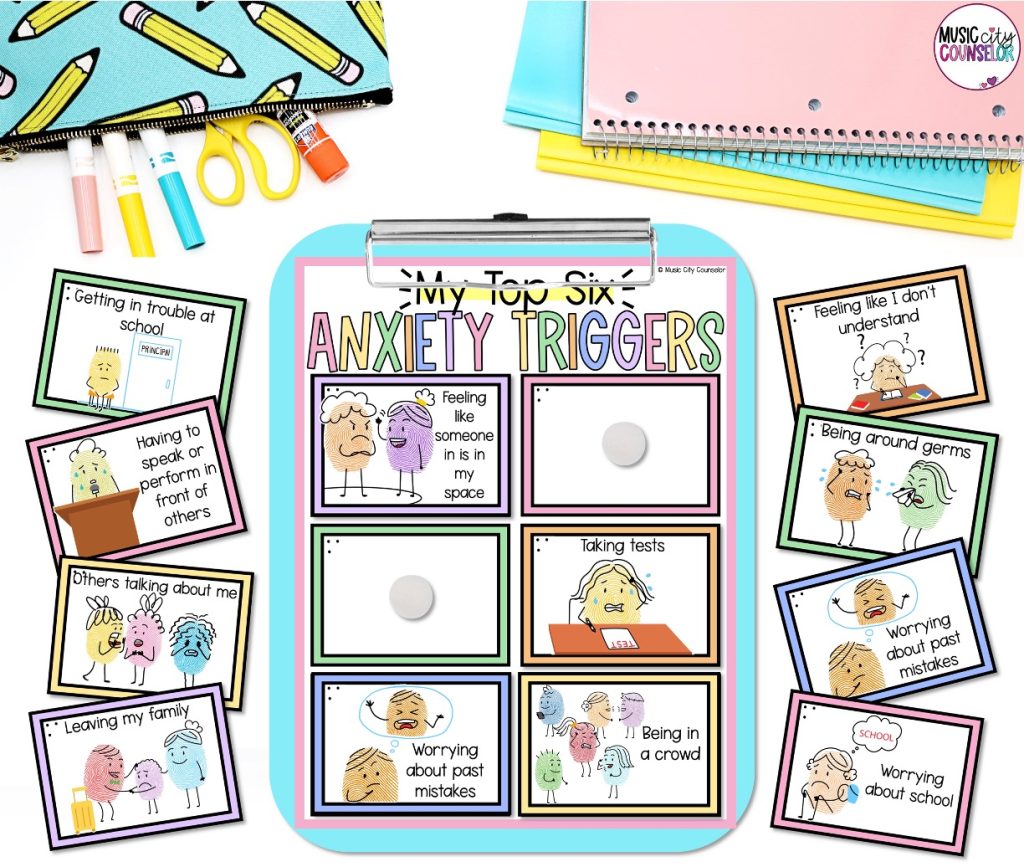
Create safe environments for children in the classroom and at school. Be intentional with the tone of your voice when speaking to students. Use group activities to foster positive peer interactions. Intentionally let students know they are not alone in their worries!
Construct a safe zone in classrooms or your office with books, art, music, and calming sensory opportunities for children to use when feelings of worry and fear begin to creep in.
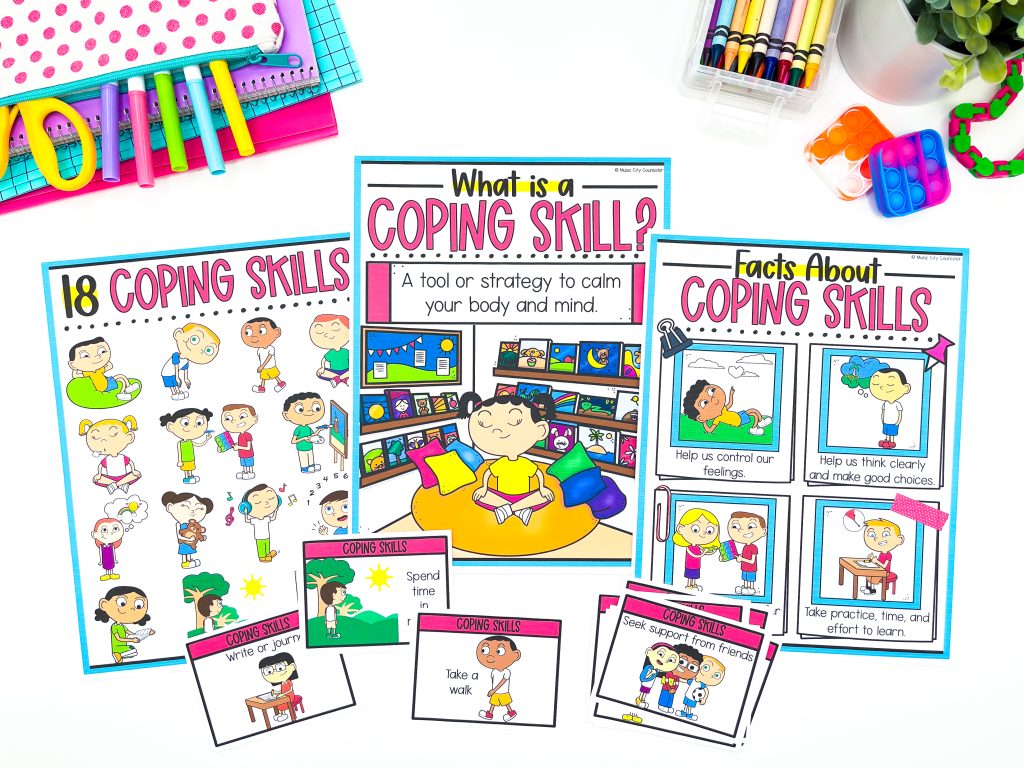
Coping skills are ways a child manages their feelings in stressful situations. As each child in your school or classroom is unique, their specific coping strategies will be unique too!
By teaching and modeling a wide variety of coping skills (or an “anxiety toolbox” as I like to call it), you are putting the power back into your students’ hands. They can confidently know that they are capable of managing their anxiety and it does not control them.
5 Categories of Coping Skills:
Physical Activity
Connecting with Others
Mindset Shifts
Instant Calming
Creative Outlets
Serving students who struggle with anxiety in a small group setting has SO many benefits, such as time-effectiveness and the opportunity for students to relate to and share with one another.
I love using this research-based, done-for-you Anxiety Small Group Curriculum that includes everything you need for 11 interactive, engaging, and memorable sessions! It teaches students to define anxiety, to understand what anxiety looks and feels like, to define and identify their anxiety triggers, to understand the 5 levels of anxiety, to define calm, to understand what calm looks and feels like, and to use 18 coping skills.
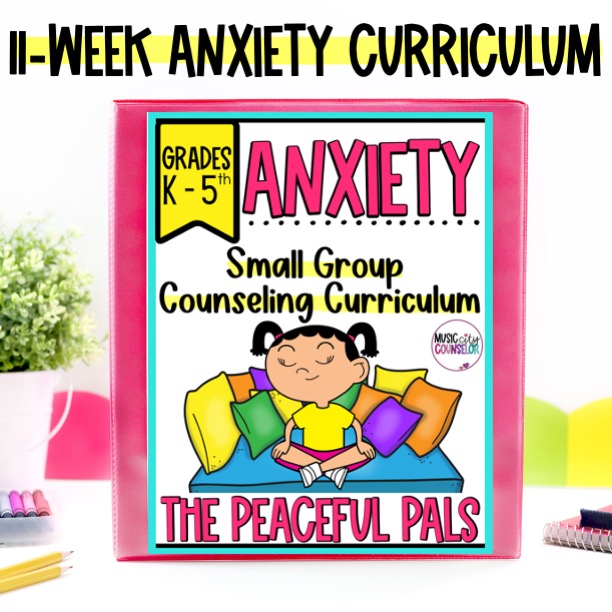
Another favorite resource for individual and small group work is this Anxiety Lap Book. It let’s students explore their feelings, identify their anxious triggers, and practice coping skills. Students also learn how anxiety looks and feels in their body and practice a grounding exercise.
Make this material interactive and easy-to-store by using hook-and-loop fastener dots and file folders.
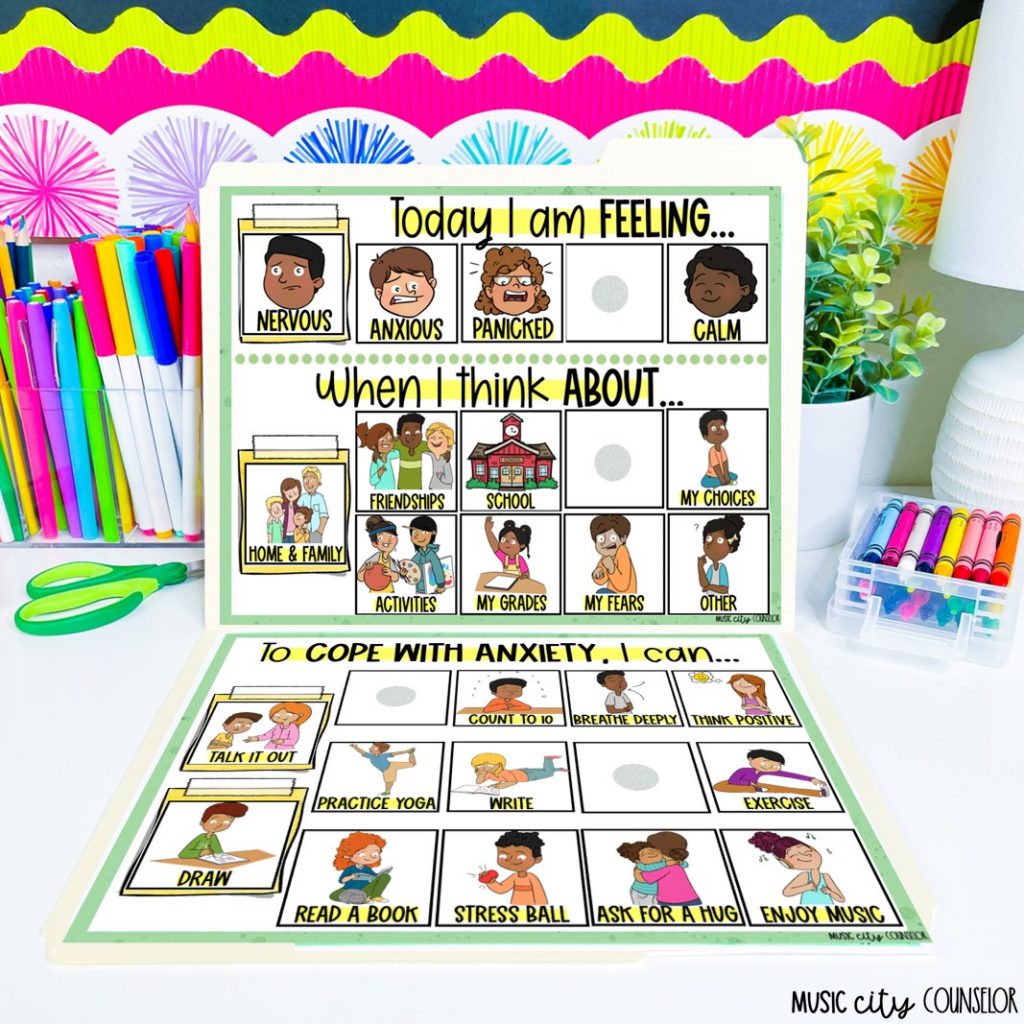
Another super effective resource to use with anxious children is this Anxiety Journal. This hands-on workbook includes cut-and-paste writing and reflective and instructional activities for students to work through as they practice identifying their triggers and coping strategies. It’s a great starting point for many anxious students who are unsure about opening up.

Empowering students through anxiety is such an important job! Leave a comment below and tell me about your go-to activity to use with children experiencing anxiety at school.
You may also be interested in:

Lebrun-Harris LA, Ghandour RM, Kogan MD, Warren MD. Five-Year Trends in US Children’s Health and Well-being, 2016-2020. JAMA Pediatr. 2022;176(7):e220056. doi:10.1001/jamapediatrics.2022.0056
| Cookie | Duration | Description |
|---|---|---|
| cookielawinfo-checkbox-analytics | 11 months | This cookie is set by GDPR Cookie Consent plugin. The cookie is used to store the user consent for the cookies in the category "Analytics". |
| cookielawinfo-checkbox-functional | 11 months | The cookie is set by GDPR cookie consent to record the user consent for the cookies in the category "Functional". |
| cookielawinfo-checkbox-necessary | 11 months | This cookie is set by GDPR Cookie Consent plugin. The cookies is used to store the user consent for the cookies in the category "Necessary". |
| cookielawinfo-checkbox-others | 11 months | This cookie is set by GDPR Cookie Consent plugin. The cookie is used to store the user consent for the cookies in the category "Other. |
| cookielawinfo-checkbox-performance | 11 months | This cookie is set by GDPR Cookie Consent plugin. The cookie is used to store the user consent for the cookies in the category "Performance". |
| viewed_cookie_policy | 11 months | The cookie is set by the GDPR Cookie Consent plugin and is used to store whether or not user has consented to the use of cookies. It does not store any personal data. |